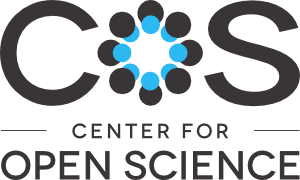Location
Our mission is to increase openness, integrity, and reproducibility of research.
These are core values of scholarship and practicing them is presumed to increase the efficiency of acquiring knowledge.
For COS to achieve our mission, we must drive change in the culture and incentives that drive researchers’ behavior, the infrastructure that supports their research, and the business models that dominate scholarly communication.
This culture change requires simultaneous movement by funders, institutions, researchers, and service providers across national and disciplinary boundaries. Despite this, the vision is achievable because openness, integrity, and reproducibility are shared values, the technological capacity is available, and alternative sustainable business models exist.
COS's philosophy and motivation is summarized in its strategic plan and in scholarly articles outlining a vision of scientific utopia for research communication and research practices.
Because of our generous funders and outstanding partners, we are able to produce entirely free and open-source products and services. Use the header above to explore the team, services, and communities that make COS possible and productive.
Members:
Resources
Displaying 201 - 205 of 447Modes of Land Access and Welfare Impacts in Uganda
This article estimates the poverty reducing impact of land access in rural Uganda. Using balanced panel data for 309 households in 2001, 2003, and 2005, models that control for unobserved household heterogeneity and endogeneity of land acquisition and disposition are employed to measure the poverty-reduction effect of land on household income and expenditure per adult equivalent. Significant poverty reduction effects of increased land access in form of owned, operated and market-accessed land were found.
Incentives for Spatially Coordinated Land Conservation: A Conditional Agglomeration Bonus Mechanism
The agglomeration bonus literature has not recognized the potential of conditional agreements to overcome the informational requirements, particularly those of landowners, necessary to induce spatially coordinated land conservation. The model presented in this paper shows that the net social benefits produced by a conditional agglomeration bonus program are at least as large as those produced by a traditional uniform subsidy whenever the benefit function exhibits threshold effects and the uniform and CAB subsidies are equal.
Going Digital: Computerized Land Registration and Credit Access in India
Despite strong beliefs that property titling and registration will enhance credit access, empirical evidence in support of such effects remains scant. The gradual roll-out of computerization of land registry systems across Andhra Pradesh’s 387 sub-registry offices (SROs) allows us to combine quarterly administrative data on credit disbursed by all commercial banks for a 11 year period (1997-2007) aggregated to the SRO level with the date of shifting registration from manual to digital. Computerization had no credit effect in rural areas but led to increased credit-supply in urban ones.
Exploring the Cost Effectiveness of Land Conservation Auctions and Payment Policies
Until recently public efforts to encourage conservation on private land in many countries has primarily been through uniform payment policies. Auctions are increasingly used as a payment mechanism to acquire public benefits such as conservation actions that provide environmental improvements on private land (e.g. the US Conservation Reserve Program (CRP).
Biofuels and Land Use Change
Biofuels may make a substantial contribution to meeting the world’s energy needs. That contribution may come sooner and be greater if there is a strong climate policy to reduce greenhouse gases and biofuels can be produced in a way that minimizes greenhouse gas emissions. We investigate the land use implications of biofuels under different policy conditions using a computable general equilibrium model of the world economy that has been adapted to explicitly consider land use change.


